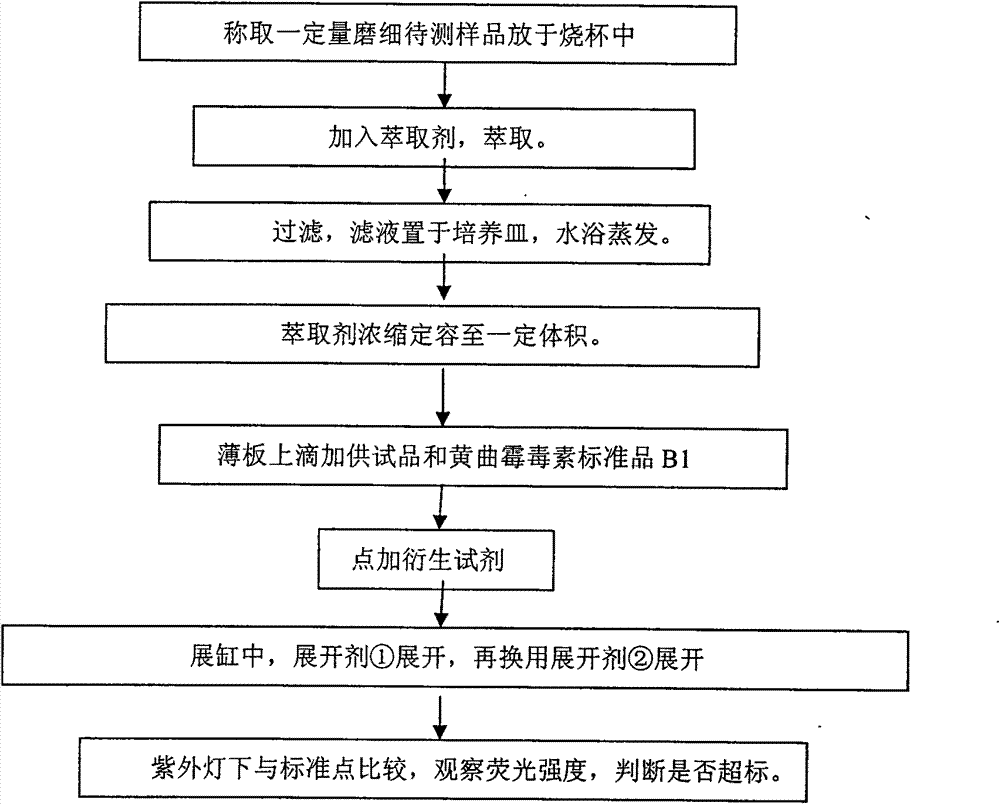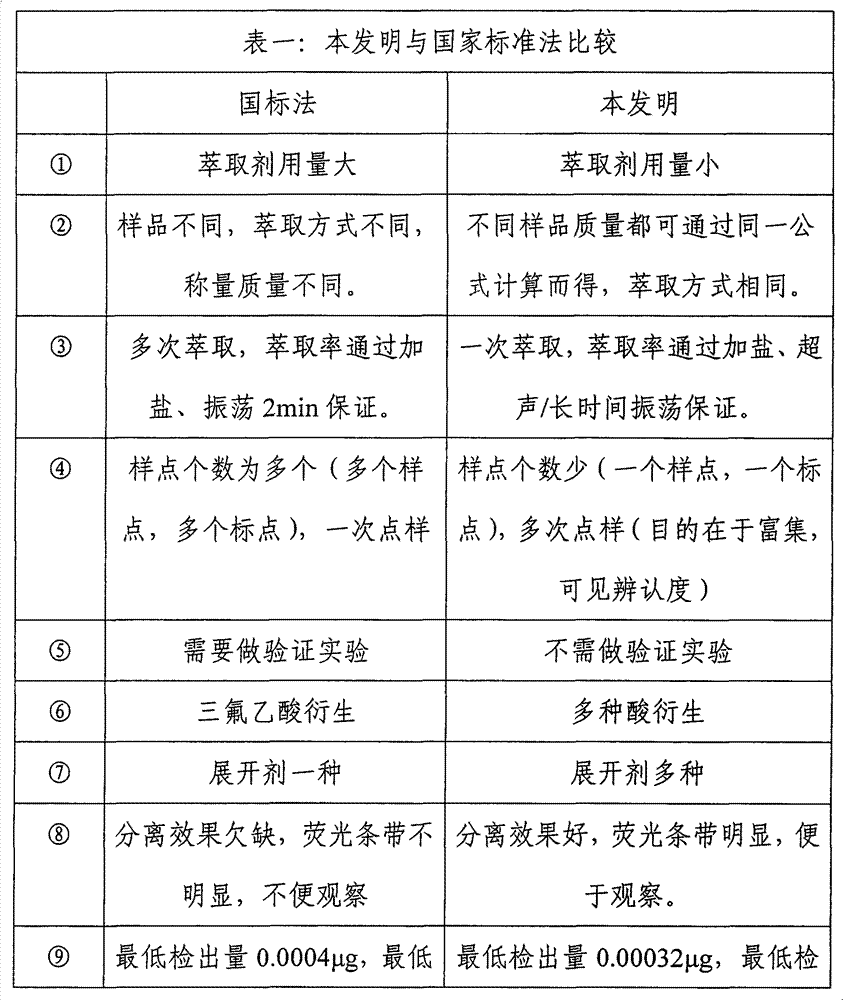Method for rapidly detecting content of aflatoxin
A kind of aflatoxin content technology, which is applied in the direction of material analysis by observing the influence on chemical indicators, fluorescence/phosphorescence, analysis by making materials undergo chemical reactions, etc., can solve the problems of high detection cost and complicated detection steps , to achieve the effects of overcoming hazards and pollution, lowering detection limits, and less environmental pollution
- Summary
- Abstract
- Description
- Claims
- Application Information
AI Technical Summary
Problems solved by technology
Method used
Image
Examples
Embodiment 1
[0028] Detect whether aflatoxin B1 in the early compound feed of piglets exceeds the standard. According to GB13078-2001 "Feed Hygiene Standard", the compound feed and concentrated feed for meat piglets are ≤10μg / kg. Calculation formula of sample Mg: Mg=(0.04μg / ml×1ml) / 10μg / kg, Mg=4g. Take 4g of the sample to be tested that has been ground through a 20-mesh sieve and put it in a 100ml beaker, add 10ml of chloroform solution, shake for 2min, and filter with qualitative filter paper. The filtrate was heated and concentrated in a water bath at 70°C, volatilized to about 0.5ml, and made up to 1ml with chloroform (referred to as the test product). On a thin-layer silica gel plate with a length of 10 cm, 30 μl each of the test sample and aflatoxin B1 standard substance (5 μl each time, 6 times in total), and then add oxalic acid with a concentration of 1.5% by weight and volume. 10 μl as derivatization reagent. After being evaporated to dryness, it was put into a chromatographic ...
Embodiment 2
[0030] Detection of aflatoxin B1 in the mid-term compound feed of 212 growing chickens. According to GB13078-2001 "Feed Hygiene Standard", it is stipulated that the compound feed and concentrated feed of broiler chickens, growing chickens, laying hens should be less than 20μg / kg. Calculation formula of sample Mg: Mg=(0.20μg / ml×1ml) / 20μg / kg, Mg=10g. Take 10g of the sample to be tested that has been ground through a 20-mesh sieve and put it in a 100ml beaker, add 20ml of dichloromethane solution, shake for 5min, and filter with quantitative filter paper. The filtrate was heated and concentrated in a water bath at 65°C, evaporated to about 1ml, and the volume was adjusted to 2ml with dichloromethane (referred to as the test product). On a thin-layer silica gel plate with a length and width of 12cm, 40μl each of the test sample and aflatoxin standard B1 (5μl each time, a total of 8 times), and then add 3% derivatization reagent dilute hydrochloric acid. 15 μl. After being evapo...
Embodiment 3
[0032] Detect whether aflatoxin B1 in corn exceeds the standard. According to GB2715-2005 "Food Hygiene Standard", the maximum allowable content of aflatoxin B1 in corn is ≤20μg / kg. Calculation formula of sample Mg: Mg=(0.20μg / ml×1ml) / 20μg / kg, Mg=10g. Take 10g of the sample to be tested that has been ground through a 20-mesh sieve and put it in a 100ml beaker, add 30ml of isopropanol solution to ultrasonic for 5min, and filter with qualitative filter paper. The filtrate was heated and concentrated in a water bath at 80°C, volatilized to about 2ml, and made up to 3ml with isopropanol (referred to as the test product). On a thin-layer silica gel plate with a length of 15cm, 24μl each of test sample ① and standard B1 (6μl each time, 4 times in total), and then add 5μl of 2% derivatizing reagent sulfuric acid. After being evaporated to dryness, put it into a hexane chromatographic cylinder filled with solvent to carry out a development, the front of the solvent is developed 10cm...
PUM
 Login to View More
Login to View More Abstract
Description
Claims
Application Information
 Login to View More
Login to View More - R&D
- Intellectual Property
- Life Sciences
- Materials
- Tech Scout
- Unparalleled Data Quality
- Higher Quality Content
- 60% Fewer Hallucinations
Browse by: Latest US Patents, China's latest patents, Technical Efficacy Thesaurus, Application Domain, Technology Topic, Popular Technical Reports.
© 2025 PatSnap. All rights reserved.Legal|Privacy policy|Modern Slavery Act Transparency Statement|Sitemap|About US| Contact US: help@patsnap.com



